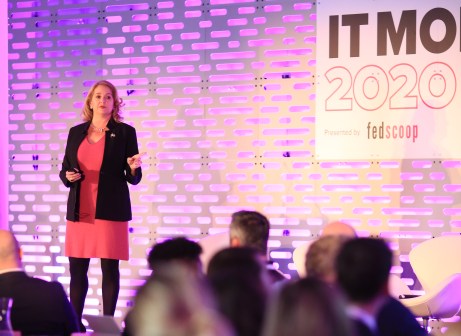Federal leaders see IT asset management as crucial to cost savings

As the Trump administration continues its ruthless overhaul of the federal government, agency tech leaders say they’re laser-focused on cost-saving measures, emphasizing modern IT asset management (ITAM) that prioritizes operational efficiency.
Speaking during a FedInsider virtual event Thursday, IT leaders from the Nuclear Regulatory Commission, the Department of Justice and the Department of Energy’s Pacific Northwest National Laboratory made the case for embracing a modern, integrated approach to ITAM as a means to more effectively close the loop between IT operations and budget watchers.
“You know ITAM, it may not sound sexy,” said Caroline Carusone, the NRC’s deputy chief information officer. But “it’s really that critical underlying foundation, and really is the fabric of all of our missions.”
Effective ITAM practices, Carusone noted, lay the groundwork for some of the administration’s top emerging tech priorities — namely artificial intelligence.
As a small independent agency, the NRC has never had large-scale buying power, and Carusone has observed how similar-sized agencies “have really struggled with negotiating” due to the budgetary limitations and the volume of software licenses needed to keep pace.
It’d be easy to fall behind on AI acquisition, too, but with a targeted, unified approach to ITAM — and a particular General Services Administration initiative — the NRC is faring well on that front, Carusone said.
For small- or mid-sized agencies, having a unified ITAM strategy “becomes even more critical, because then you can find partners, you can find other organizations potentially to pair with and look at how you can negotiate rates, and we’ve actually seen some success in doing that,” she said. “And there’s a whole OneGov effort right now underway with really trying to negotiate lowest costs, to really look at the federal government at large as one customer, as opposed to independent shops.”
At the DOJ, Nikki Collier has also pursued an “enterprise approach” to ITAM. In her role as deputy CIO, she said she’s on alert for the “spread of software that we don’t have visibility into,” working to ensure that risk isn’t introduced into the environment and that there are no budgetary surprises.
“It’s just difficult to manage that open source and … access to free software, and that is why it’s so important to build in those policies and those access controls,” Collier said. “Cost is definitely a huge aspect of all of this.”
Tyler Troutman, solutions architect at PNNL, said the national lab in Richland, Wash., is focused not just on acquisition and deployment when it comes to IT, but also sustainability and “even reuse in some cases.” It’s crucial that the lab bakes its procedures and processes into its software management, so that there’s minimal room for error and compliance is a given.
That philosophy also takes into account the need to keep costs manageable, Troutman noted, as his “priority matrix” weighs everything from usage and maintenance to “cost to repair versus cost to replace.” He’s also excited about the cost-saving possibilities that an adaptive licensing model could bring.
“We have 6,500 employees. We have some enterprise licenses. But what if annually, only 3,000 people use that?” Troutman said. “Instead of having to gut check that, what if I’m able to say, ‘this is up for renewal, and here’s the license, here’s the usage statistics over the last three years.’
“I think that allows us to be … better stewards of the money that we’re given … on behalf of the taxpayer,” he added.
The NRC also has the taxpayer in mind as it continues maturing its ITAM framework. The focus on ITAM, according to Carusone, has allowed the agency to be “smart and more strategic” in its modernization. The nuclear regulatory body has discovered duplicative platforms across multiple offices and consolidated tools thanks to “this more integrated visibility,” she noted.
“In this extremely constrained federal budget environment and all the pressures that we’re facing, being able to do that and find — just within the margins — budget to do modernization has been really key to make sure our investments are aligning with our priorities,” she added.




